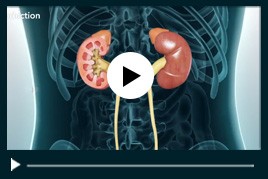Prostate
The prostate is a variable-sized gland located in the male pelvis, usually the size of a walnut measuring 3-4 Centimeters long and 3-5 centimeters width. On average the gland weighs about 20 grams. The prostate surrounds the urethra, which carries urine from the bladder to the penis. The seminal vesicles attach to the prostate and produce material that mixes with the prostatic fluid to form semen. The tubes from the testicles carry sperm to the prostate where the sperm are mixed with the prostate and the seminal vesicle fluid. The fluid is then ejaculated during orgasm by a connection to the urethra called the ejaculatory ducts.
With a slow connection, it may take about a minute to download this presentation.
Below are some some common conditions, diagnostics and treatments in relation to the prostate. Some of topics below are discussed elsewhere, click on the link to go to that section.
- Prostatic Seminal Antigen (PSA)
- Benign Prostatic Hyperplasia (BPH)
- TURP
- TRUS
- Prostatitis
- Digital rectal exam (DRE)
Prostatitis
Prostatitis, inflammation of the prostate gland, is a common urological condition. During sexual climax, muscles in the prostate propel the semen through the urethra and out through the penis. An infected or inflamed prostate can cause painful urination and ejaculation, and can cause serious complications (e.g., infertility).
Types
There are four types of prostatitis: acute bacterial prostatitis, chronic bacterial prostatitis, nonbacterial prostatitis, and prostatodynia.
Acute bacterial prostatitis (ABP) is inflammation of the prostate gland caused by bacteria such as Escherichia coli and Klebsiella. Severe complications may develop if not promptly treated. ABP can be fatal if the bacterial infection is untreated and travels to the bloodstream (sepsis).
Chronic bacterial prostatitis (CBP) is a recurrent infection and inflammation of the prostate and urinary tract. Symptoms are less severe than those associated with acute bacterial prostatitis .
Nonbacterial prostatitis is an inflamed prostate without bacterial infection.
Prostatodynia, sometimes called chronic pelvic pain syndrome (CPPS), is the occurrence of prostatitis symptoms, without inflammation or bacterial infection.
Diagnosis
Urinalysis is used to determine the presence of leukocytes (white blood cells) in the urine. Leukocytes help the body to fight infection; a high number indicates a bacterial infection. A urine culture is used to analyze bacteria.
Treatment
Treatment vary from simple antibiotics to surgery depending on the type of prostatitis, so patients should discuss their options with a doctor.

 Menu
Menu




